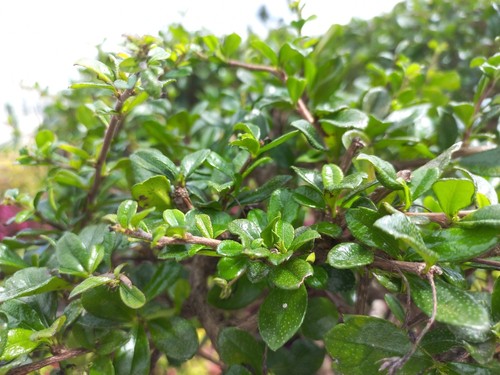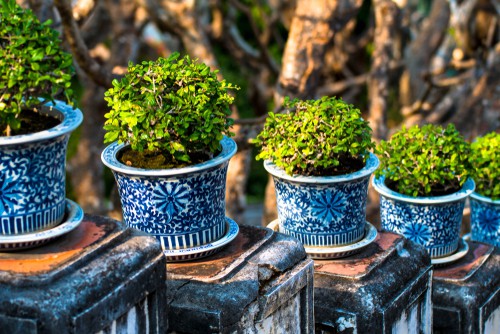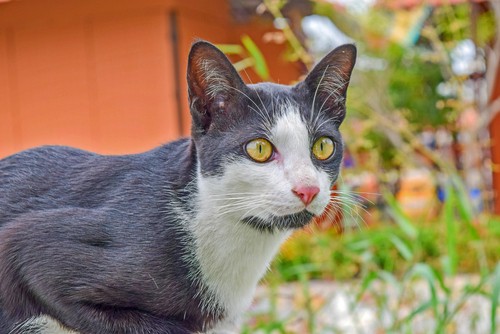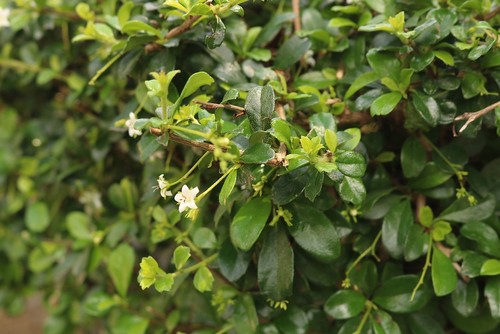Fukien tea bonsai is a popular indoor plant that is native to Southeast Asia. It is known for its small leaves, white flowers, and beautiful bark. However, one common issue that bonsai enthusiasts face when cultivating Fukien tea bonsai is the appearance of white spots on the leaves.
These white spots can be caused by various factors, including pests, fungal infections, or environmental stress. Identifying the cause of the white spots is crucial for proper treatment and prevention.
In this article, we will discuss the different factors that can cause white spots on Fukien tea bonsai leaves and provide tips on how to treat and prevent leaf spot disease.
Key Takeaways on White Spots on Fukien Tea Bonsai Leaves
- Proper identification of the cause of white spots on leaves is crucial for treatment and prevention.
- Maintaining proper care and maintenance of Fukien tea bonsai can help prevent leaf spot disease.
- Understanding the art and experience of bonsai cultivation can help bonsai enthusiasts create healthy and beautiful plants.
Check out these other related posts:
Understanding Fukien Tea Bonsai

Fukien Tea Bonsai is a popular indoor bonsai tree species known for its small, leathery dark green leaves with white dots and fine hairs.
The tree species is native to Southeast Asia, specifically the Fujian province located at the southeast coast of mainland China. The bonsai fukien tea tree is popular for its knotted trunk and grayish-beige fissured bark that adds old age and drama to the tree’s appearance.
The art of bonsai involves growing and shaping miniature trees in containers. Fukien Tea Bonsai is a great indoor bonsai tree that is easy to care for and maintain. The tree requires bright, indirect sunlight and a consistent watering schedule to thrive.
Overwatering can lead to root rot, while underwatering can cause the leaves to dry out and fall off.
Fukien Tea Bonsai is susceptible to pests and diseases, including white spots on the leaves. The white spots are normal and do not necessarily indicate a problem with the tree’s health. The white spots are actually a sign of maturity and will turn brown and drop sooner or later.
However, if the leaves drop off prematurely, it may be a sign of a pest or disease problem.
Origins and Natural Habitat
The Fukien tea bonsai, also known as Carmona microphylla or Ehretia microphylla, is a subtropical flowering evergreen shrub native to Southeast Asia and East Asia.
Its name, “Fukien,” comes from its place of origin – Fujian, China. In its natural habitat, it can grow as a small tree up to 9.8 feet tall (3 meters high) upright in warm climates.
The Fukien tea bonsai is a popular species for bonsai enthusiasts due to its small size and delicate white flowers. It is a member of the Boraginaceae family and is closely related to the forget-me-not and borage plants. In nature, it can be found growing in rocky areas, hillsides, and forests.
The plant’s natural habitat includes the Fujian province in China, as well as other countries in Southeast Asia, including the Philippines, Indonesia, and Malaysia. It prefers warm and humid climates and can tolerate temperatures as low as 50°F (10°C) and as high as 100°F (38°C).
The Fukien tea bonsai has small leathery dark green leaves with little white hairs on their glossy surface. The tip of the leaves is notched or dented. Flowers can appear all year round, and they are star-shaped, white, and small, growing in clusters of two to six on short stems.
Fukien Tea Bonsai White Spots On Leaves

Fukien tea bonsai trees are beautiful and delicate plants that require proper care to thrive. One common issue that affects these trees is the appearance of white spots on their leaves. These spots can be caused by a variety of factors, including fungal infections, mold, and other issues.
To identify white spots on the leaves of a Fukien tea bonsai, one should look for small, circular, or irregular shaped white dots or patches on the leaves. These spots can be caused by fungal infections or mold growth on the leaves.
They can also be caused by natural aging of the leaves, where the white spots indicate that the leaves are mature and will soon fall off.
Fungal infections can be identified by the presence of powdery white spots on the leaves. These spots can spread quickly and can lead to the death of the tree if untreated. Mold growth can also cause white spots on the leaves. This can be identified by the presence of a fuzzy or slimy growth on the leaves.
It is important to identify the cause of the white spots on the leaves to determine the appropriate treatment. If the spots are caused by natural aging, then no treatment is necessary. However, if the spots are caused by fungal infections or mold growth, then treatment is necessary to prevent the spread of the infection.
Treatment and Prevention of Leaf Spot Disease
Leaf spot disease can be treated and prevented with proper care and maintenance of the Fukien Tea Bonsai. Here are some effective ways to treat and prevent leaf spot disease:
- Remove affected leaves: If any leaves are affected by leaf spot disease, they should be removed immediately. This will prevent the disease from spreading to other leaves and branches.
- Improve air circulation: Good air circulation is essential to prevent leaf spot disease. Make sure the bonsai is not overcrowded, and there is enough space between the leaves and branches.
- Avoid overwatering: Overwatering can lead to the development of leaf spot disease. Make sure the soil is well-drained, and the bonsai is not sitting in water.
- Use a fungicide: If leaf spot disease persists, a fungicide can be used to treat the bonsai. Choose a fungicide that is specifically designed for bonsai trees and follow the instructions carefully.
- Control pests: Pests such as mites and scale can weaken the bonsai and make it more susceptible to leaf spot disease. Regularly inspect the bonsai for pests and use appropriate pest control methods if necessary.
By following these steps, the bonsai can be kept healthy and free from leaf spot disease.
Proper Care and Maintenance

Proper care and maintenance are crucial for the health and appearance of a Fukien tea bonsai. The following information will help ensure that your bonsai thrives.
1. Soil and Watering
A well-draining soil mix is essential for a Fukien tea bonsai. The soil should be kept moist but not waterlogged, as excess wetness can lead to root rot.
Watering needs will depend on factors such as the size of the pot, the amount of water the soil can hold, and the amount of natural light the bonsai receives. In general, it is best to water when the soil surface feels slightly dry to the touch.
2. Temperature and Light
Fukien tea bonsais can be grown both indoors and outdoors, but they require warm temperatures and indirect light. Direct sunlight can scorch the leaves and cause damage to the tree.
In warm climates, morning sun and afternoon shade are ideal. When grown indoors, a grow light may be necessary to provide the bonsai with sufficient natural light.
3. Fertilizing and Pruning
Fukien tea bonsais benefit from slow-release fertilizer applied during the growing season, typically in early summer. Hard pruning can be done in the spring to encourage new growth and shape the tree. Wiring and air-layering can also be used to manipulate the growth habits of the tree.
4. Repotting and Propagation
Fukien tea bonsais should be repotted every two to three years, using a soil mix that includes akadama. Propagation can be achieved through layering or cuttings taken in the early summer.
5. Humidity and Care Guide
Fukien tea bonsais prefer a humid environment, and their leaves are covered in fine hairs that can trap dust and debris. Regular misting can help keep the leaves clean and healthy. A comprehensive care guide, such as the one provided by Hooked on Bonsai, can provide additional information on how to care for your bonsai.
Recognizing and Understanding Fukien Tea Bonsai Features

Fukien Tea Bonsai, also known as Carmona Retusa, is a popular choice for both beginner and advanced bonsai enthusiasts. This evergreen plant is native to warm climates and is known for its small white flowers and thick, shiny leaves.
One of the most common issues with Fukien Tea Bonsai is the appearance of white spots on the leaves. These spots are usually caused by pests such as spider mites or mealybugs. If left untreated, they can cause serious damage to the plant and even lead to its death.
To prevent white spots and other issues, it is important to understand the features of Fukien Tea Bonsai. This includes its bark, which is smooth and grayish-brown in color, and its soil, which should be well-draining and made up of a mixture of sand and organic matter.
Fukien Tea Bonsai also produces small red to black fruits, which are edible but not commonly consumed. Its status as a popular bonsai plant means that there are many resources available for those looking to improve their care techniques.
Sites like Reddit have dedicated communities where bonsai enthusiasts can ask questions and share tips.
Safety Measures for Humans and Pets
Fukien tea bonsai trees are generally safe for humans and pets, but certain precautions should be taken to avoid any potential harm. Here are some safety measures to keep in mind:
Humans
- Wear gloves when handling the tree, as some people may be allergic to the sap or other substances in the tree.
- Do not ingest any part of the tree, as it may cause stomach upset or other adverse reactions.
- Keep the tree out of reach of children, as they may accidentally ingest parts of the tree or knock it over.
- If you notice any unusual symptoms after handling the tree, such as skin irritation or difficulty breathing, seek medical attention immediately.
Pets

- Keep the tree out of reach of pets, as some species may be attracted to the leaves or bark and attempt to eat them.
- Research which trees are harmful to pets and avoid bringing them home. While Fukien tea bonsai trees are generally safe for pets, some species may be allergic or have adverse reactions to certain substances in the tree.
- Watch for any unusual symptoms in your pets after they have been in contact with the tree, such as vomiting, diarrhea, or lethargy. If you notice any of these symptoms, contact your veterinarian immediately.
Toxicity
While Fukien tea bonsai trees are generally safe for humans and pets, it is important to note that some species of bonsai trees may be toxic. Research the specific species of tree you are interested in to determine if it is safe for your household. If you are unsure, consult with a bonsai expert or veterinarian.
The Art and Experience of Bonsai Cultivation
Bonsai cultivation is both an art and an experience that requires patience, dedication, and attention to detail. It involves growing miniature trees in containers and shaping them to mimic the appearance of full-sized trees found in nature.
The practice originated in Japan and has since spread to other parts of the world, where it has gained popularity among bonsai enthusiasts.
The quality of a bonsai tree is measured by its overall appearance, including its shape, size, and foliage. Bonsai enthusiasts strive to create trees that appear as if they have been growing in the wild for many years. This requires careful pruning, wiring, and training of the tree’s branches and roots.
In Japan, bonsai cultivation is seen as a form of art that requires a deep understanding of the natural world. Bonsai artists spend years perfecting their craft, learning the nuances of tree growth and development.
They use a variety of techniques to create trees that are both beautiful and realistic, including shaping the tree’s trunk and branches, and manipulating the tree’s growth patterns.
Bonsai cultivation is an experience that requires patience and dedication. It can take years to create a bonsai tree that is truly beautiful and realistic. Bonsai enthusiasts must be willing to invest time and effort into their trees, carefully monitoring their growth and development over time.
Frequently Asked Questions
How can I treat white spots on my bonsai leaves?
White spots on bonsai leaves are often a sign of a fungal infection. To treat these spots, simply wipe down the affected leaves with a damp cloth and use a fungicide regularly.
It is important to note that prevention is key when it comes to fungal infections, so make sure to keep your bonsai tree in a well-ventilated area and avoid overwatering.
What are some common diseases that affect bonsai trees?
Bonsai trees are susceptible to a variety of diseases, including fungal infections, bacterial infections, and insect infestations.
Some common diseases that affect bonsai trees include powdery mildew, black spot, root rot, and aphids. It is important to identify and treat these diseases early on to prevent them from spreading to other parts of the tree.
What is the best fungicide to use on bonsai trees?
There are many different fungicides available for use on bonsai trees, but the best one to use will depend on the specific type of fungal infection that your tree has.
Some common fungicides that are effective against a wide range of fungal infections include neem oil, copper fungicide, and sulfur-based fungicides. Be sure to read the label carefully and follow all instructions when using any type of fungicide on your bonsai tree.
How do I identify a fungal infection on my bonsai tree?
Fungal infections on bonsai trees can be identified by a variety of symptoms, including white or gray spots on the leaves, wilting or yellowing leaves, and a general decline in the health of the tree.
If you suspect that your bonsai tree has a fungal infection, it is important to take action quickly to prevent the infection from spreading.
What are the white spots on my ficus ginseng leaves?
White spots on ficus ginseng leaves are often a sign of a fungal infection, similar to white spots on other types of bonsai trees. To treat these spots, follow the same steps as you would for any other type of bonsai tree with a fungal infection.
How often should I water my Fukien tea bonsai tree?
Fukien tea bonsai trees should be watered when the soil feels slightly dry to the touch. It is important not to overwater your bonsai tree, as this can lead to root rot and other problems.
In general, Fukien tea bonsai trees should be watered about once a week, but this can vary depending on the specific conditions in your home or garden.

Hey, I’m Lisa and I’ve been an avid gardener for over 30 years. I love writing, talking and living in the garden! Feel free to connect with me on my socials below

